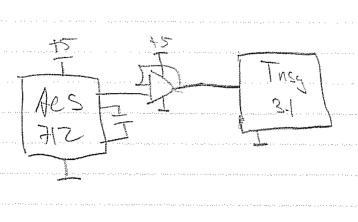Good People,
Am reading a ACS712-5, powered by 5V, using a buffer (simple V follower op amp). The current sensor provides good V, measured at analog pin on the Tnsy 3.1, over the 250mA range, but ADC results always indicate full the full scale count for whatever res that I have set for the ADC.
Am using the default 3V3 ref.
Code attached, and schem image. Please advise - am certain that I am overlooking something painfully obvious.
schem image. Please advise - am certain that I am overlooking something painfully obvious.
Thanks much.
Am reading a ACS712-5, powered by 5V, using a buffer (simple V follower op amp). The current sensor provides good V, measured at analog pin on the Tnsy 3.1, over the 250mA range, but ADC results always indicate full the full scale count for whatever res that I have set for the ADC.
Am using the default 3V3 ref.
Code attached, and
 schem image. Please advise - am certain that I am overlooking something painfully obvious.
schem image. Please advise - am certain that I am overlooking something painfully obvious.Thanks much.

